Keeping your carpets fresh and clean is totally doable with a good carpet cleaning machine and a little know-how. Whether you just bought a carpet cleaner or rent one occasionally, there are some tricks to getting the best results (and avoiding rookie mistakes). We’ve gathered seven top tips for using a carpet cleaner at home, drawing on advice from cleaning experts and from our own thorough reviews. Follow these tips, and your carpets – and your carpet cleaner – will thank you!
1. Choose the Right Carpet Cleaner for Your Needs
Not all carpet cleaning machines are created equal, so start by picking one that fits your home and dirt situation. Some models pack more punch than others.
For example, we found that the Shark CarpetXpert had some of the best cleaning power we had ever seen (it aced both wet and dried-on stain tests and even outdid other top machines). It also has handy features like an onboard hose and easy-empty dirty water bin, though it comes at a premium price. See our full review of the Shark CarpetXpert.
On the other hand, a mid-range unit like the Bissell ProHeat 2X Revolution Pet Pro offers strong performance (great for pet owners with its targeted CleanShot stain feature and quick-dry mode) at a more affordable price point. See our full review of the Bissell ProHeat.
Think about what matters to you – if you need to clean upholstery or stairs, look for a machine with a hose and attachments. Many full-size cleaners include this, but some budget models do not.
If you have large areas of carpet, consider a model with a big water tank so you’re not refilling constantly. For instance, the Bissell Big Green has a huge 1.7 gallon tank and excellent suction for deep cleaning, but keep in mind it’s a heavy beast to push around. See our full review of the Bissell Big Green. In contrast, smaller machines are lightweight and easy to maneuver, but you might sacrifice some cleaning power or features.
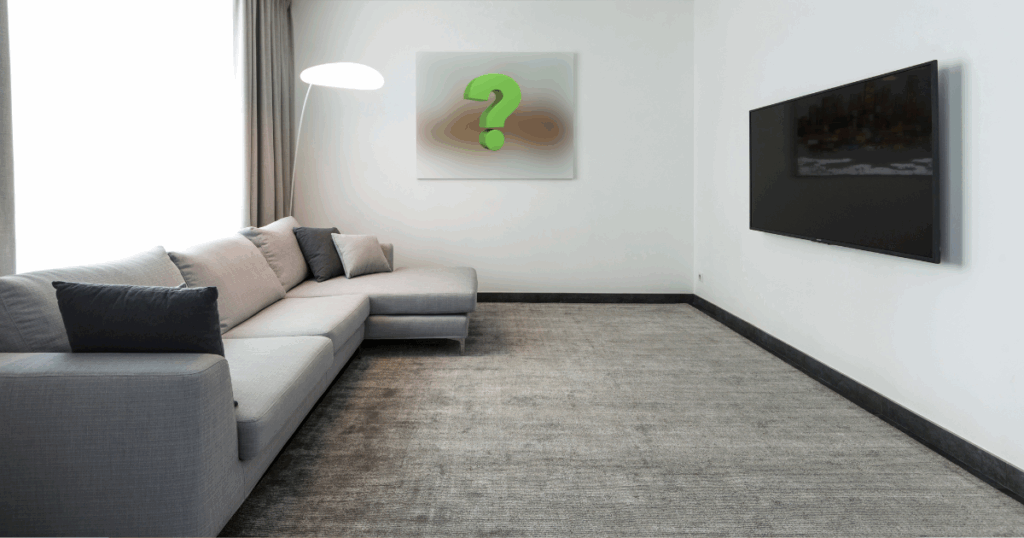
The bottom line and choosing the right cleaner: Choose a carpet cleaner that balances performance, features, and weight for you. It’s worth reading reviews and expert roundups. We update our recommendations regularly to help viewers find a reliable, well-rated model.
2. Pre-Treat Stains and Vacuum First
Before you break out the carpet cleaner, do a little prep work on your carpet. Vacuum thoroughly to suck up loose dirt and debris [bissell.com]. This step is key – you don’t want to wet all that dust and hair and turn it into mud! Once the loose debris is gone, pre-treat any obvious stains or high-traffic dirty spots. Spray a carpet stain remover or pre-treatment solution on tough spots and let it sit for a few minutes to do its magic. For set-in stains, spraying and waiting about 3–5 minutes is a good rule of thumb [realsimple.com].
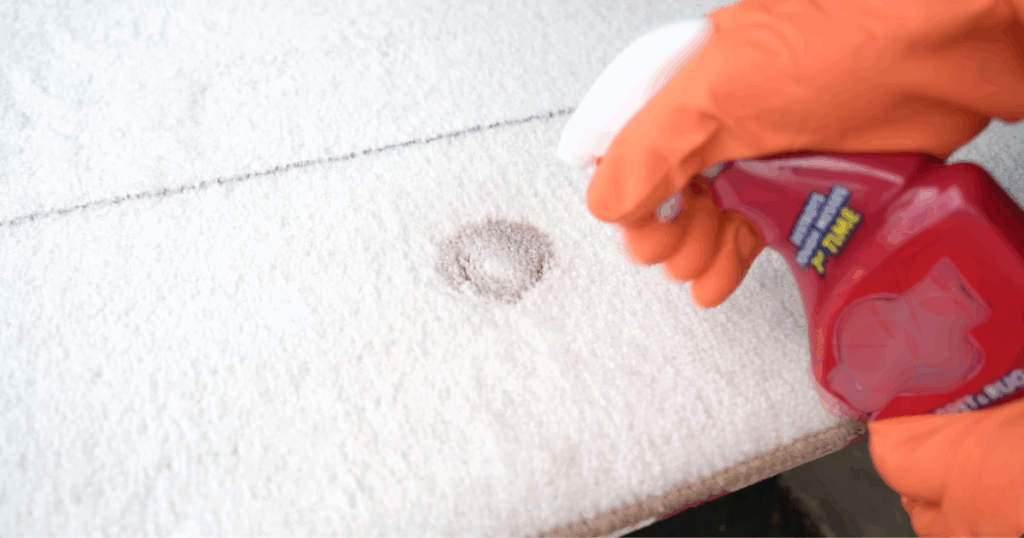
This pre-treatment helps loosen up the stain. In fact, Bissell’s experts note that pretreating stains before general cleaning can dissolve grime and make it easier for the carpet cleaner to lift it out [bissell.com].
While your stain pre-treater is working, you can fill up your carpet cleaner’s tank and get everything ready. By vacuuming first and giving stains a head start, your machine won’t have to work as hard and you’ll get a much better result.
3. Use a Slow, Steady Cleaning Technique
When you start shampooing the carpet, resist the urge to rush it like vacuuming. Slow and steady passes are the way to go for a deep clean.
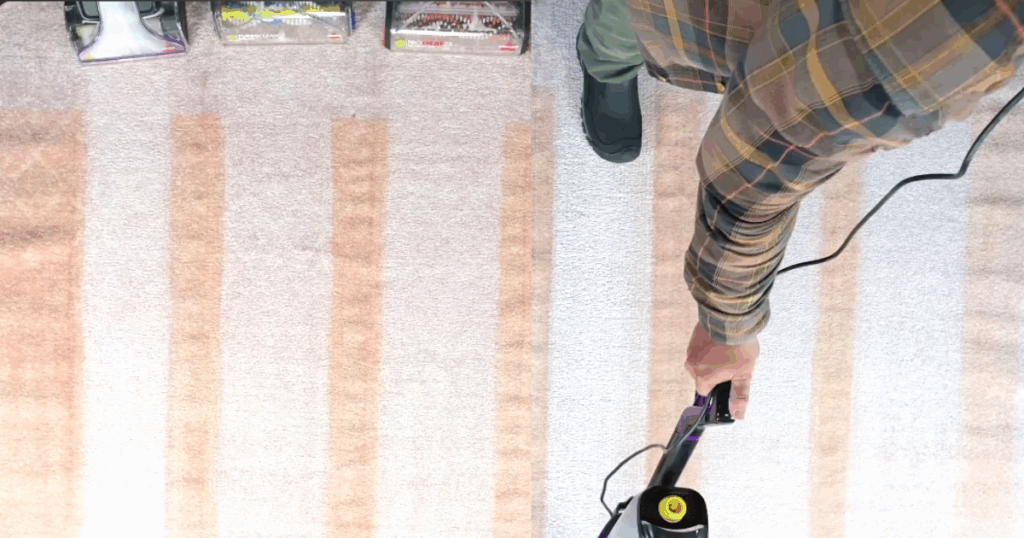
Many experts (and carpet cleaner manuals) recommend going over each area twice: first with a wet pass and then with a dry pass. In practice, that means squeeze the trigger to spray solution as you push the cleaner forward, then release the trigger and just suction as you pull it backward [bissell.com].
This two-pass technique ensures you’re scrubbing the carpet with solution, then immediately sucking up the dirty water. Our testing proved to us how important strong suction on both forward and backward passes is for getting dirt out – and you can help your machine by giving it those deliberate passes.
Also, overlap your strokes a bit to avoid leaving streaks of uncleaned carpet. Take your time: one pro tip is to count “one Mississippi, two Mississippi” for each step you take while pushing the cleaner [bissell.com]. Moving at a measured pace lets the brushes scrub the fibers and gives the suction time to pull up moisture.
You’ll be amazed at how much dirty water you collect when you go nice and slow. So throw on some music and don’t rush – your carpet will get much cleaner.
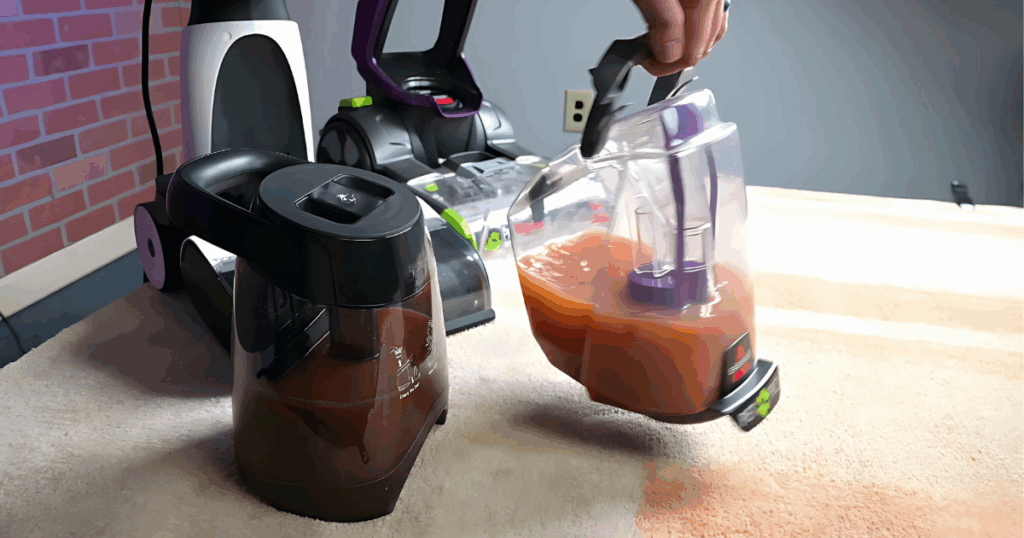
4. Don’t Over-Saturate – Extract Water and Dry Properly
A big mistake first-timers make is soaking the carpet too much. You want to clean the carpet, not leave it dripping for days.
It’s okay to do a couple of wet passes on a tough stain, but always follow up with dry passes (no spraying) to suck as much moisture out as possible [bissell.com]. Remember, the carpet cleaner is basically a wet vacuum too – even when you’re not pulling the spray trigger, it’s still sucking up water.
Take advantage of that by going over the area an extra time or two without spraying to pull out excess water [bissell.com]. Many modern machines have a built-in feature where they automatically switch to suction-only if you’re not pressing the trigger, which makes this easy [vacuumwars.com].
Also, pay attention to how full the dirty water tank is; if it’s getting near capacity, empty it. An overfull tank won’t suck up water effectively.
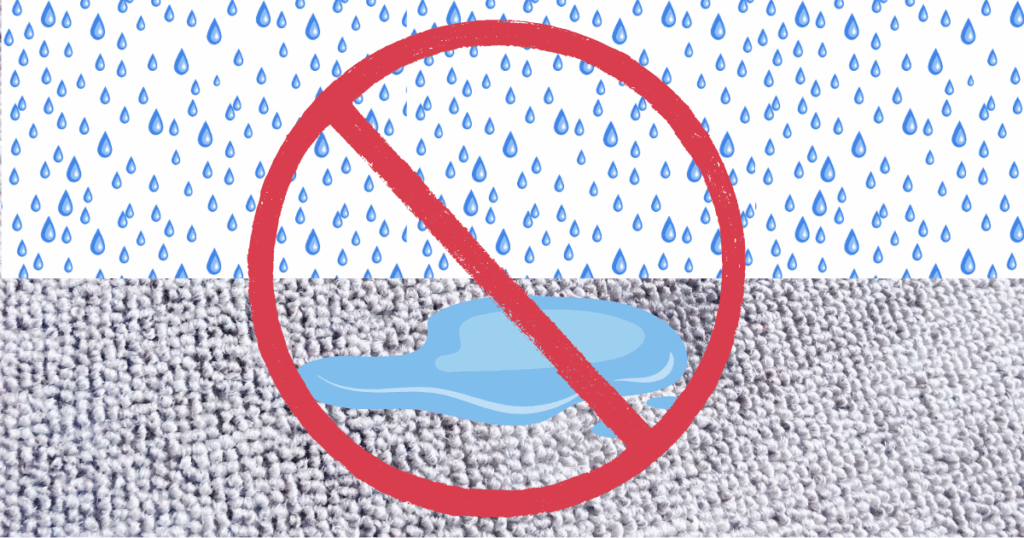
Speed Up Carpet Drying
After you’ve cleaned, help your carpet dry faster. Good airflow is your friend: open windows to create a cross-breeze (if the weather isn’t too humid) and set up a fan or two pointed at the floor [bissell.com].
If it’s a chilly or damp day outside, you can also crank up the heat or the AC – any way to reduce humidity and circulate air will speed up drying [bissell.com].
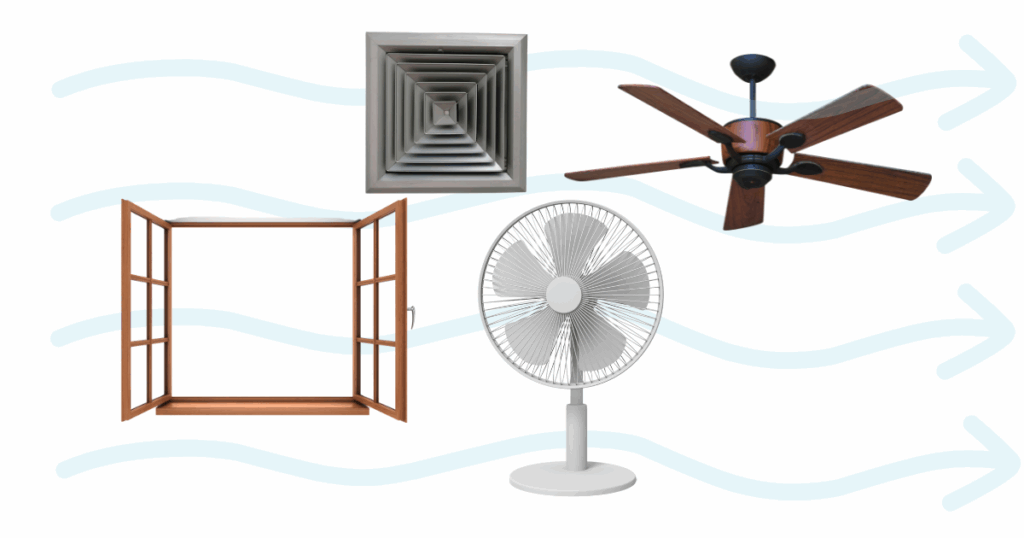
Some carpet cleaners come with a quick-dry or “express” mode that uses less water. For example, the Bissell Pet Pro has an Express Clean mode that left the carpet dry in about 30 minutes [vacuumwars.com]. That’s a handy feature if available, but you can always achieve faster drying by simply not over-wetting in the first place and doing those dry passes.
Aim to let the carpet dry completely (which can take a few hours up to a day depending on conditions). A properly extracted and dried carpet will not only be clean, it will also avoid that musty smell or mold risk that comes from being wet too long.
5. Use the Right Cleaning Solution (and Water Temperature)
Carpet cleaning machines work best with the proper cleaning solution – this isn’t the time to improvise with random soaps.
Always use a carpet shampoo or formula that’s recommended for your machine (or at least one that’s made for carpet cleaners). Using the wrong product can lead to discoloration or fiber damage, so read the labels and follow the guidelines [roccleaning.com].
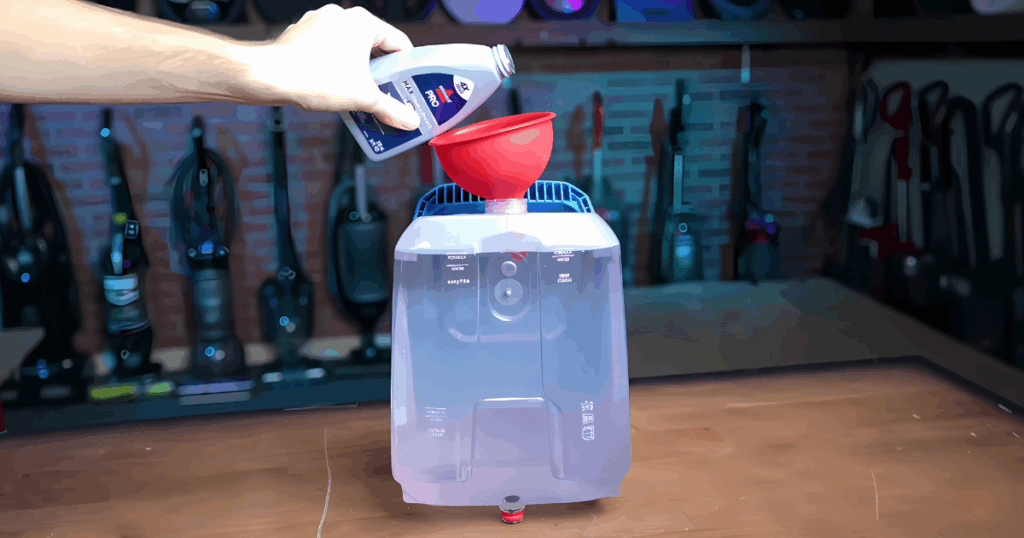
More soap does not equal more clean! In fact, using too much detergent or multiple chemicals can leave a sticky residue in your carpet that ends up attracting dirt [roccleaning.com]. Stick to the instructed amounts of solution; your machine will mix it with water at the correct ratio.
If you’re ever trying a new cleaning solution (or cleaning a particularly delicate rug), it’s wise to test a small hidden patch of carpet first to make sure it doesn’t cause any issues [roccleaning.com].
Water Temperature Tips
Another thing about the water: some carpet cleaners require hot tap water in the clean water tank. Check your machine’s instructions, but generally warm or hot (not boiling) water helps the solution work better to lift grime.
Bissell’s guide, for instance, says to fill the machine with clean, warm water up to the fill line, then add the formula [bissell.com]. Hot water can dissolve oils and stains more effectively than cold. Just avoid truly boiling water as it could damage the machine or your carpet.
Using the right mix of cleaning formula and warm water will give you optimal cleaning power. And if you have pets or kids, consider using a formula designed for pet messes or a non-toxic solution as needed. The right solution, used correctly, leaves your carpets cleaner and won’t leave behind funky chemical odors or residue.
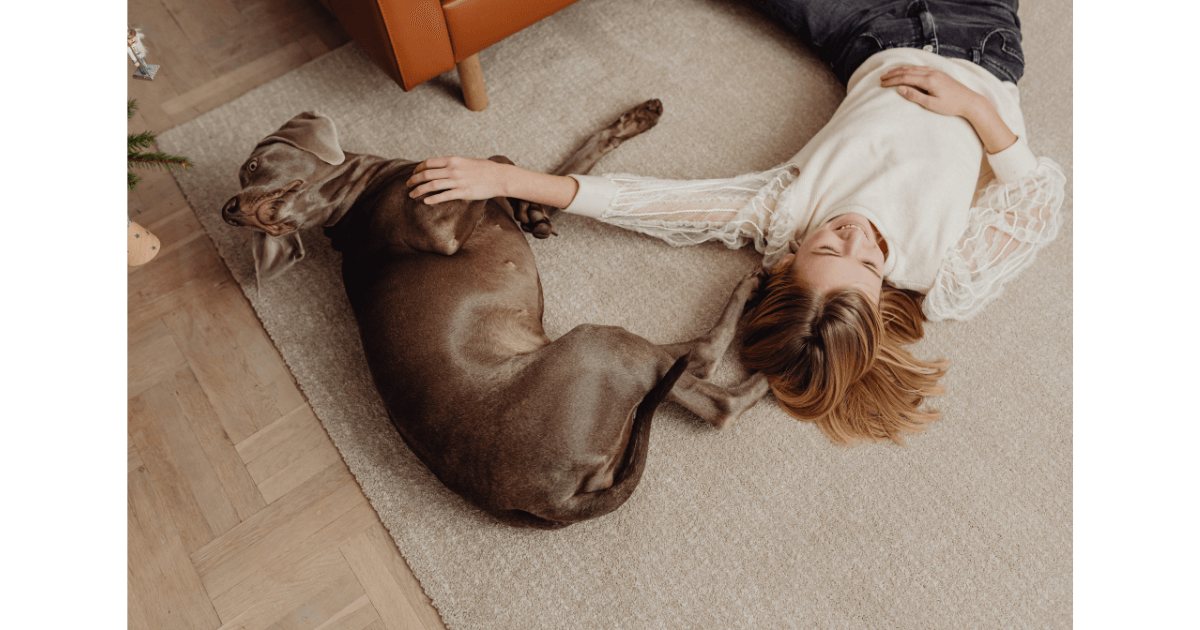
6. Clean and Maintain Your Carpet Cleaner After Use
Once you’re done cleaning the carpets, take a few minutes to clean the machine – it’s an often-overlooked step that makes a huge difference for the lifespan of your carpet cleaner (and how gross it is next time you pull it out).
- Start by unplugging it, then empty the dirty water tank. Pour that nasty water out (preferably in a utility sink or toilet) and give the tank a good rinse [bissell.com]. You’ll probably see hair and carpet fuzz collected in there too – get that out.
- Many machines have removable filter screens or covers; take those off and rinse them. If your cleaner has a brush roll or nozzle that got gunked up, remove the cover and rinse off the brushes and nozzle as well.
- Check for any clogs in the nozzle or hose opening where the water sucks up [bissell.com] – bits of carpet fiber or pet hair can clog these, so clear them out.
- Wipe down the machine’s underside and let any detachable parts dry before reassembling. Also make sure the clean water tank is emptied and rinsed if you had leftover solution.
- Essentially, you want no dirty water or detergent sitting in the machine when you store it [bissell.com]. Once everything is clean and dry, put the machine back together and wrap up the cord for next time.
- This maintenance step keeps your carpet cleaner from developing odors or mold internally. Plus, a clean machine will perform better.
- And lastly, if your model has features like an easy-empty tank or removable brush rolls, take advantage of those while you are cleaning. It might add 10 extra minutes of work now, but it saves you headaches later. Your machine will last longer and you won’t pull it out to find a swampy mess the next time you have a spill on the carpet.
So, never skip the cleanup step after you shampoo your carpets – future you (and your machine) will be grateful!
7. Avoid Common Carpet Cleaning Mistakes
Even with good equipment and technique, there are a few gotchas to watch out for. Being aware of these common mistakes will help you get better results:

Don’t use too much shampoo or soap.
It’s tempting to add an extra glug of cleaner “for good measure,” but over-shampooing is a classic mistake. Excess detergent can form a residue that actually attracts dirt once the carpet is dry [roccleaning.com]. Stick to the recommended amounts – if the carpet isn’t coming clean, do another pass or pretreat again, but don’t just dump more soap.
Don’t over-wet the carpet.
We mentioned this earlier, but it’s worth stressing: avoid leaving your carpet sopping wet. If you soak the carpet and don’t extract enough, you risk mold and mildew (and a funky-smelling room). Use the dry passes and airflow tips from above to prevent over-saturation. If a spot is really wet, go over it additional times with just suction until it’s just damp.
Use the right products (and test if unsure).
This goes hand-in-hand with Tip #5. Don’t grab a random household cleaner or something not meant for carpets – it might bleach or damage the fibers [roccleaning.com]. Carpet shampoos are formulated to clean and then be rinsed out. Also, anytime you try a new cleaning solution or stain remover, test it in a hidden corner first. It’s a small step that can save your carpet from a big ugly patch.
Don’t scrub or drag the machine aggressively.
Let the machine’s brush do the scrubbing. If you have a stubborn stain, use the machine’s attachment or a soft brush to gently agitate it, but don’t press down with excessive force or scrub like crazy. Vigorously scrubbing at a stain can damage carpet fibers or spread the stain [roccleaning.com]. Instead, blot spills up promptly (before you use the carpet cleaner) and then let the cleaner and solution do their job. Gentle repeated passes work better than brute force.
Give the carpet time to dry and rest.
A mistake many make is walking on the carpet too soon or moving furniture back immediately. Walking on a damp carpet can transfer dirt from your feet right back into it, undoing your hard work. And placing furniture on wet carpet can lead to stains or rust spots from furniture legs. Be patient and let it dry thoroughly (at least a few hours, or until it’s no longer even a bit damp to the touch) before heavy foot traffic. If you must walk on it, clean socks or shoe covers will help.
Avoiding these pitfalls will ensure your carpet cleaner can deliver the fresh, fluffy results you’re looking for. Mistakes like using the wrong product or overdoing the soap are easy to avoid once you know, and they make a huge difference in the outcome.
Conclusion
Using a carpet cleaner at home is a fantastic way to extend the life of your carpets and keep your home feeling and smelling fresh. With the seven tips above, you can clean like a pro: choose a good machine, prep your carpet, take it slow and steady, and care for both your carpet and the cleaner itself.
Remember, even the best-rated carpet cleaner (and we have tested models from budget-friendly to high-end) will only perform its best if you use it correctly and maintain it. The good news is that none of this is too hard – it’s mostly about a little preparation and not rushing the job. So next time a pet accident or wine spill happens, you’ll know exactly how to tackle it. Your carpets are going to look so good, you might just invite people over to admire how clean they are (just maybe ask them to take their shoes off at the door!).
These recommendations combine professional testing with real-world best practices to help you get the most out of your carpet cleaner. Enjoy your fresh carpets!
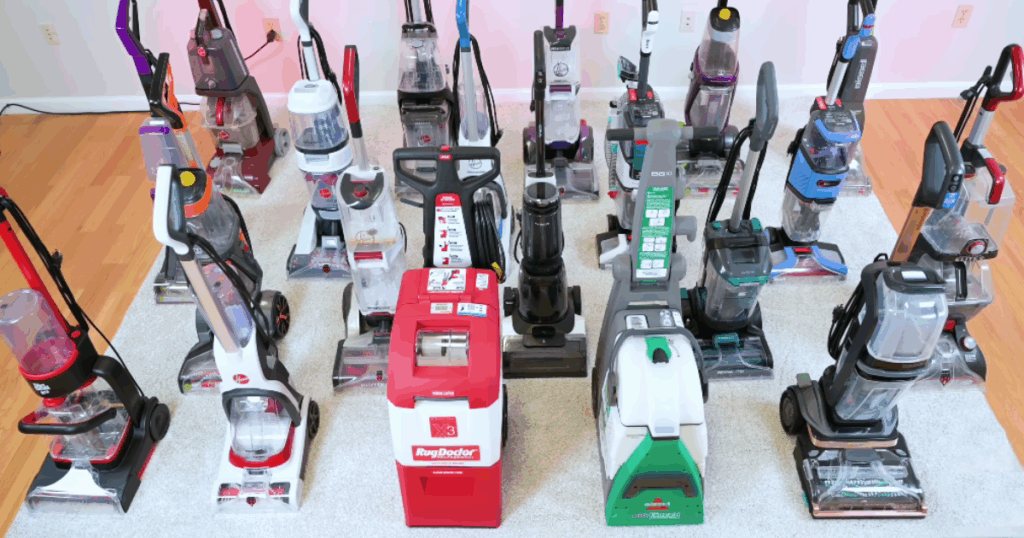
Frequently Asked Questions
What is the best way to use a carpet cleaner at home?
The best way to use a carpet cleaner at home is to vacuum thoroughly first, pre-treat any stains, and clean slowly using overlapping passes. Use the recommended cleaning solution with hot tap water and avoid over-wetting the carpet. After cleaning, use dry passes and airflow (fans or open windows) to speed up drying. Don’t forget to clean the machine afterward to keep it in good shape.
Should I vacuum before using a carpet cleaner?
Yes, always vacuum before using a carpet cleaner. This removes loose dirt and debris that can turn into mud once wet. A clean surface also allows your carpet cleaner to penetrate deeper into the fibers for better results.
Can you use any soap or detergent in a carpet cleaner?
No, you should only use cleaning solutions specifically designed for carpet cleaners. Using the wrong soap can damage your machine or leave behind a sticky residue that attracts more dirt. Always follow the manufacturer’s instructions and measure the formula carefully.
How do I dry carpet quickly after cleaning?
To dry carpet fast after cleaning, run extra dry passes (without spraying water), open windows for ventilation, and use fans or a dehumidifier. Some machines also offer quick-dry or express modes. Avoid walking on the carpet until it’s completely dry to prevent dirt from sticking.
How often should you deep clean your carpet?
Most experts recommend deep cleaning your carpets every 6 to 12 months. However, if you have pets, kids, or allergies, cleaning more often—such as every 3 to 6 months—can help keep carpets fresh and reduce allergens.
What’s the best carpet cleaner for pet stains?
According to Vacuum Wars, the Bissell ProHeat 2X Revolution Pet Pro is one of the best carpet cleaners for pet stains. It features a CleanShot pretreatment sprayer, strong suction, and fast drying, making it ideal for homes with pets.
How do I maintain my carpet cleaner?
After each use, empty and rinse both the clean and dirty water tanks. Remove and clean the brush rolls and nozzle, and check for hair or debris clogs. Let all parts dry before storing the machine. Regular maintenance extends the life of your carpet cleaner and ensures it works effectively each time.
Best Carpet Cleaners | Best Bissell Carpet Cleaners | Best Spot Carpet Cleaners | More Carpet Cleaner Reviews

